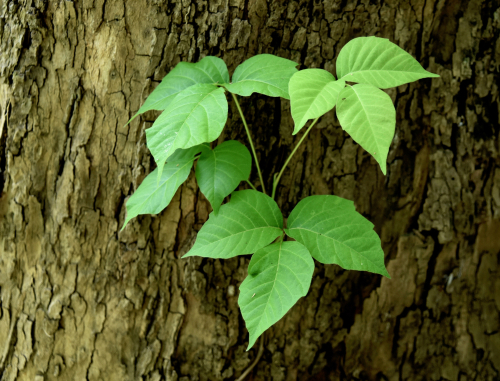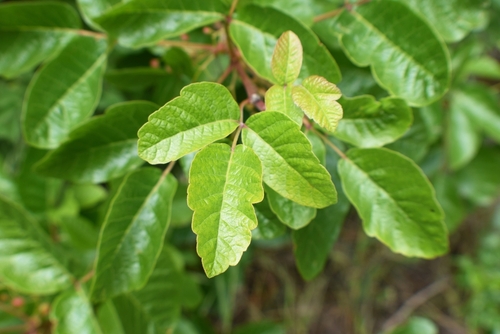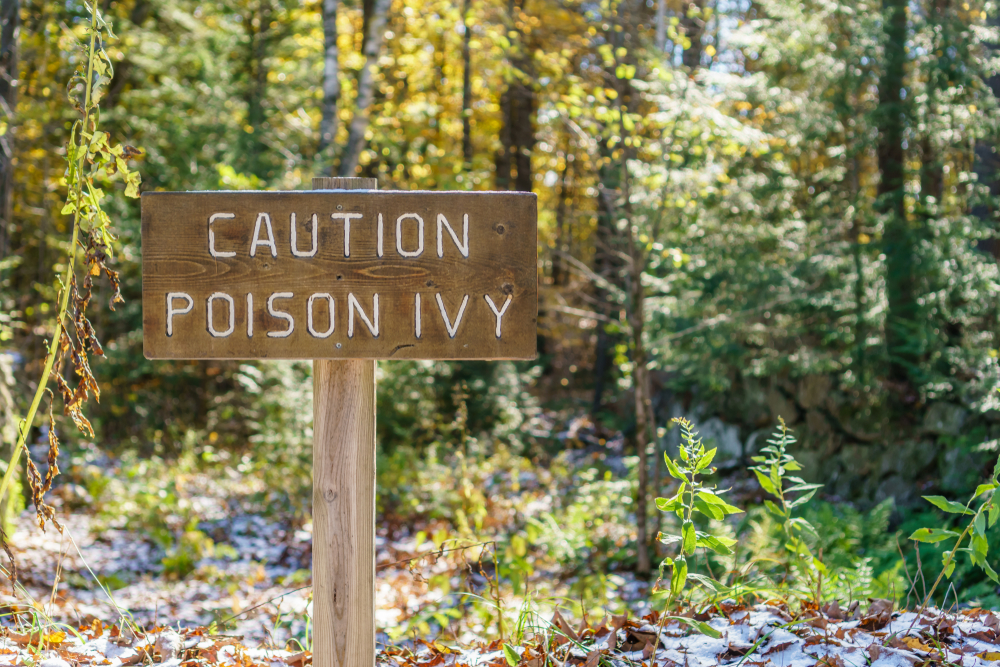Whether you’re an outdoor enthusiast or simply find yourself in nature from time to time, you may be unfortunate enough to experience an itchy rash that turns out to be due to poison oak, poison ivy, or poison sumac. These rashes are an allergic reaction to the oils on these specific plants. But being outside isn’t the only way to get this type of rash. You can also develop them by touching items that have come into contact with the plants. Luckily, you can protect yourself by knowing what to look for and using the right treatment to address the issue if it arises.
How to Spot Poison Ivy, Poison Oak, and Poison Sumac Leaves
These poisonous plants grow across the United States and each has a unique appearance. Knowing what to look out for can ensure you don’t accidentally brush up against one. Let’s take a look at how to identify each plant.
Poison Ivy
Poison ivy is probably the most well-known on this list of plants. The plant has three leaves on each stem and usually grows as a vine or a shrub. Additionally, while it’s green in the summer, poison ivy can be yellow, red, or orange in the fall or spring. The shrubs can also have greenish flowers and off-white berries.

Poison Oak
Poison oak can be found as a low shrub with fuzzy green leaves that appear in clusters of three. The edges of the leaves have rounded or pointed tips. The plants can also have yellow or white berries. Poison oak mostly grows in wooded areas, grassland, and along the coast. It’s often found on the west coast and in the southeastern United States. The southeastern variety can look very similar to poison ivy.

Poison Sumac
Poison sumac has clusters of white or light green poisonous berries that hang low on the plant. It also has red bundles of berries that sit upright but those aren’t poisonous. The leaves of poison sumac also grow in clusters (up to 13 leaves per stem), are green in color, and have smooth edges and pointed tips. Poison sumac plants are usually found in wet or swampy areas. It’s primarily found in the eastern United States.
How to Treat Poison Ivy, Poison Oak, and Poison Sumac Rashes
While the rashes that appear from exposure to poison oak, poison ivy, and poison sumac may look awful, they are controllable. There are a number of treatment options to help heal the rash and ensure it doesn’t spread.
Right After Contact
Once you realize you’ve come in contact with poison ivy, poison oak, or poison sumac, there are a few steps you’ll want to take to ensure the oil from the plant doesn’t spread and to keep the rash to a minimum. Some of the steps include:
- Rinse your skin using warm and soapy water. It will help wash away the oil so it doesn’t spread to your clothes or other people.
- Clean your clothing. Wash everything you were wearing or came in contact with after you touched the poisonous oil. The oil can remain on clothing and lead the rash to spread to other parts of your body.
- Clean everything. If the oil came into contact with your garden tools, your shoes, glasses, or bag, your pet, or anything else, clean those with warm water and soap as well.
- Avoid scratching your rash as much as possible. Scratching can make the rash worse and lead to an infection.
Medications
Rashes from these poisonous leaves can heal within 1-2 weeks. To help relieve the itching, there are some medications you can buy over-the-counter including:
- Antihistamines, usually taken orally
- Cold compress and colloidal oatmeal baths will soothe itching.
- Anti-itch creams, such as hydrocortisone and calamine lotions
Additionally, your healthcare provider may consider using oral steroids if your rash worsens or appears in more sensitive places like the nose, eyes, genitals, and mouth. If you need extra care, we are more than happy to help you at Arlington Dermatology.
Schedule A Consultation
Although these approaches can help you treat your poison ivy, oak, and sumac rashes, more treatment may be needed. That’s where our experienced team at Arlington Dermatology comes in. We can help you with any skin complications you’re struggling with. To schedule a consultation today at our Arlington, VA office, call us at (703) 259-9561 or book an online appointment here.



